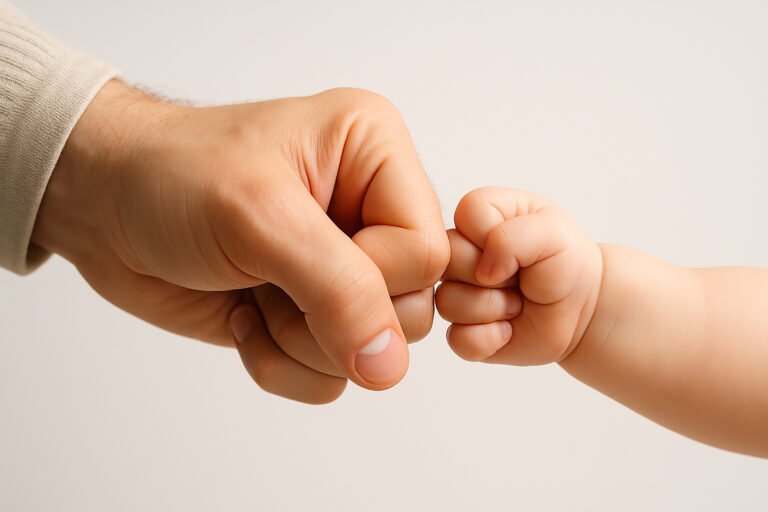The Difference Between Tantrums and Meltdowns – And How to Respond to Each

Ever Wondered Why Some Outbursts Feel So Different?
As school counselors, psychologists, parents, and allied health professionals, we’ve all encountered moments where a child is kicking, screaming, or refusing to comply—and we’ve found ourselves asking, Is this a tantrum or a meltdown?
Understanding the difference between the two is more than semantics. It shapes how we respond, what tools we use, and how we support emotional regulation and behavior long-term. While tantrums and meltdowns may look similar on the surface, they are driven by very different needs—and our responses must reflect that.
This post breaks down the difference, shares practical response strategies, and offers insight from real-life work with children who struggle to stay regulated.
Why It’s Important to Understand the Difference
Behavior Is Communication
Children—especially those with limited language or emotional regulation skills—communicate through behavior. Whether it’s defiance, tears, or shutdowns, there’s always a message underneath.
Misreading a meltdown as a tantrum can lead to ineffective or even harmful responses, such as withdrawing support or using consequences that escalate distress. On the other hand, misreading a tantrum as a meltdown may lead to over-accommodating behaviors that require boundaries and guidance.
What Is a Tantrum?
Tantrums are emotional outbursts that often involve yelling, stomping, crying, or throwing objects. While distressing, they are typically goal-driven—meaning the child wants something and is struggling with how to get it.
Key Characteristics of a Tantrum
- Usually occurs when a child is told “no” or doesn’t get their way
- The child may check for your reaction or change tactics mid-outburst
- The behavior may de-escalate when attention is withdrawn or the goal is achieved
- The child can often calm quickly once the need is met or the limit is enforced
- Tantrums are common in young children learning to manage frustration and impulse control
Why Tantrums Happen
Tantrums are a developmentally normal part of early childhood. They occur when a child feels overwhelmed by emotion, unable to express themselves clearly, or is testing limits and boundaries. Fatigue, hunger, and overstimulation can all be contributing factors.
What Is a Meltdown?
Meltdowns are not intentional or goal-driven. They are a full loss of emotional control, often triggered by sensory overload, anxiety, trauma responses, or an overwhelmed nervous system. Children in meltdown are not manipulating or testing—they are simply trying to survive the moment.
Key Characteristics of a Meltdown
- The child appears out of control and disconnected from their surroundings
- There is no awareness or interest in outcomes, rewards, or consequences
- Often occurs in response to overstimulation, transitions, or emotional build-up
- Meltdowns take time to recover from and aren’t typically resolved by giving in or enforcing rules
- Common in children with autism, sensory processing challenges, or trauma backgrounds
Why Meltdowns Happen
Meltdowns happen when the brain and body become overwhelmed, and the child enters a fight-flight-freeze state. It’s a nervous system collapse, not a behavior problem. Children in meltdown need safety and support—not consequences.
Tantrum or Meltdown? How to Tell the Difference
| Feature | Tantrum | Meltdown |
|---|---|---|
| Goal-Oriented | Yes | No |
| Responsive to Audience | Yes (may stop to check reaction) | No (child is disconnected) |
| Self-Control | May still have some | Lost |
| Triggers | Limits, not getting something | Overwhelm, sensory input, stress |
| Ends When… | Goal is met or behavior is ignored | Nervous system resets |
In my experience, many parents and educators confuse the two, especially when the behaviors look extreme. I recall a child I worked with who screamed and hit during transitions. At first glance, it appeared defiant—but over time, it became clear these were meltdowns rooted in sensory overwhelm. Once we introduced a visual schedule, fidget tools, and quiet cues, the episodes decreased dramatically.
How to Respond to Tantrums
Stay Calm and Consistent
Children in tantrum mode are watching for your reaction. Model calmness, speak softly, and avoid escalating your tone.
Acknowledge Feelings, Not Demands
“You’re really upset that it’s time to leave the playground. It’s hard when fun things end.” Acknowledging the emotion shows empathy, but maintain the boundary.
Use Clear Limits
Hold steady on expectations: “We’re not buying candy today.” Give simple choices where appropriate: “You can walk or hold my hand.”
Praise Regulation
When the child calms down or uses a positive strategy, praise it gently: “You took deep breaths—that really helped your body calm down.”
How to Respond to Meltdowns
Prioritize Safety and Regulation
Remove the child from overstimulating environments if possible. Reduce noise, light, and people.
Don’t Talk Too Much
Children in meltdown can’t process language well. Keep communication simple: “I’m here. You’re safe.” Avoid problem-solving in the heat of the moment.
Use Co-Regulation Tools
Sit nearby. Offer calming strategies that have worked in the past—weighted items, sensory toys, or breathing visuals.
Allow Recovery Time
Don’t expect immediate re-engagement. The nervous system needs time to reset. Follow up later with connection and curiosity: “That was a hard moment. Want to draw what happened?”
Supporting Emotional Development Long-Term
Whether you’re managing tantrums or meltdowns, your long-term goal is the same: to help the child understand their emotions, express them safely, and build regulation skills.
Teach Feeling Words
Use visuals, stories, and check-ins to help kids name their emotions.
Build Predictability
Visual schedules, timers, and transitions help reduce overwhelm.
Model Emotional Regulation
When you manage your own frustration with calmness and flexibility, you show kids what it looks like to handle big feelings.
A Personal Note from Practice
One child I worked with would regularly collapse under the table during writing tasks. Initially it was seen as avoidance, but we discovered she had perfectionism-related anxiety and sensory sensitivities. Giving her a calm corner, breaks with a fidget, and gentle encouragement changed everything. Her “tantrums” were actually shutdown-style meltdowns. When her needs were met, her capacity for learning and connection blossomed.
Final Thoughts
Understanding the difference between tantrums and meltdowns allows us to respond with empathy, insight, and effective support. One demands boundaries and calm consistency. The other demands co-regulation, patience, and nervous system safety.
Behavior isn’t always what it seems. But when we look closely, we find the story underneath—and that’s where the healing happens.
Want More Resources to Support Kids with Big Emotions?
The All Therapy Resources Membership gives you access to hundreds of practical, printable tools to support emotional regulation, behavior, and connection. From visual calm-down strategies and feeling charts to parent handouts and social scripts, you’ll find ready-to-use resources created by professionals who get it.
Join the All Therapy Membership to explore the full resource library and feel more confident supporting every kind of behavior—one moment at a time.













